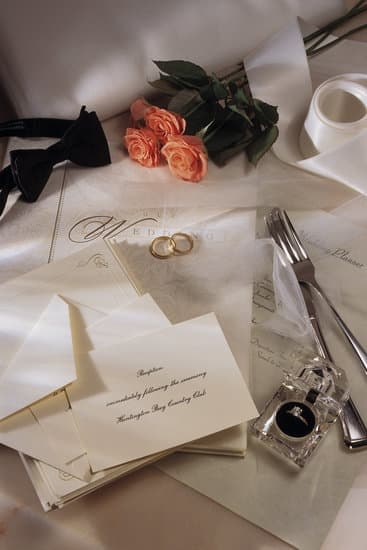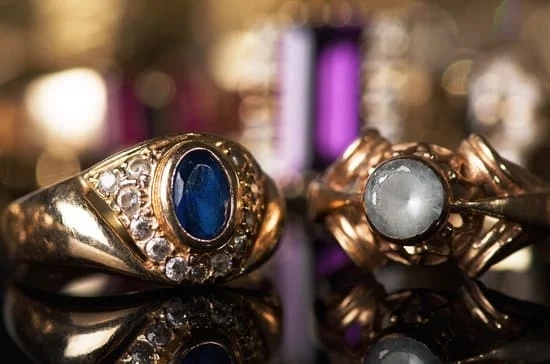Seed bead jewelry has become increasingly popular due to its versatility and intricate designs. One of the key elements in creating eye-catching and unique seed bead jewelry is the use of color combinations. In this article, we will explore how to design color combos for seed bead jewelry, from understanding color theory to choosing the right seed bead colors, experimenting with different combinations, and incorporating metallic and multicolored seed beads.
Color plays a crucial role in the overall aesthetic of seed bead jewelry, and understanding color theory is essential for creating stunning designs. We will delve into the basics of color theory and its application in jewelry design, including examples of popular color schemes such as monochromatic, complementary, and analogous. Additionally, we will discuss how to choose the right seed bead colors that complement each other while considering factors like skin tones and outfits.
Furthermore, we will encourage readers to experiment with various color combinations and provide tips on creating a color palette to test out different options. Balancing color intensity and creating patterns and geometric designs with colors will also be covered, along with drawing inspiration from nature and cultural influences. Ready to unleash your creativity? Let’s dive into the world of designing stunning color combos for seed bead jewelry.
Understanding Color Theory for Seed Bead Jewelry
When it comes to designing seed bead jewelry, understanding color theory is essential for creating eye-catching and harmonious designs. Color theory provides a framework for choosing colors that work well together, enhancing the overall appeal of your jewelry pieces. By applying the principles of color theory, you can elevate your seed bead jewelry designs and create stunning color combinations that capture attention.
Basics of Color Theory
Color theory is based on the relationships between colors and how they interact with each other. It encompasses concepts such as the color wheel, which illustrates the primary, secondary, and tertiary colors, as well as their various shades and tints. Understanding the color wheel allows you to identify different color schemes and apply them to your seed bead jewelry designs effectively.
Application in Jewelry Design
Incorporating color theory into your seed bead jewelry design involves using various color schemes such as monochromatic, complementary, and analogous. A monochromatic scheme involves using variations of a single color, providing a subtle yet sophisticated look. On the other hand, a complementary scheme pairs colors that are opposite each other on the color wheel for contrast. An analogous scheme utilizes colors that are adjacent to each other on the color wheel, creating a harmonious and cohesive palette.
Importance of Color Combos
By mastering color theory, you can choose seed bead colors that complement each other while considering factors such as skin tones and outfits. This ensures that your jewelry pieces resonate with potential customers and can be worn with a variety of ensembles. Experimenting with different color combinations based on color theory opens up endless possibilities for creating unique and visually appealing seed bead jewelry designs.
Overall, understanding color theory for seed bead jewelry design empowers you to make informed choices when selecting colors for your creations. By grasping the basics of color theory and its application in jewelry design, you can confidently experiment with different color combinations and unleash your creativity in designing stunning seed bead jewelry pieces.
Choosing the Right Seed Bead Colors
When it comes to creating stunning seed bead jewelry, selecting the right colors is crucial in achieving a visually appealing and harmonious piece. Understanding how to design color combos for seed bead jewelry can elevate your designs and make them stand out. Here are some tips for choosing the right seed bead colors that complement each other and enhance the overall aesthetic of your jewelry pieces.
First, consider the color theory and its application in jewelry design. Color theory provides a framework for understanding how different colors work together and how they can be combined to create visually pleasing combinations. Some popular color schemes to consider for seed bead jewelry include monochromatic, complementary, and analogous color schemes. Understanding these basic concepts will give you a solid foundation for creating beautiful color combinations in your beadwork.
It is also important to take into account skin tones and outfits when choosing seed bead colors. Different skin tones can be enhanced by certain colors, so it’s essential to consider who will be wearing your jewelry pieces.
Additionally, think about the type of outfits that your customers or yourself like to wear with the jewelry. For example, if you typically wear neutral-toned clothing, you may want to create versatile seed bead jewelry pieces with colors that complement a variety of outfits.
Experimenting with different color combinations is key to designing unique and eye-catching seed bead jewelry. Creating a color palette and testing out various combinations can help you discover unexpected but stunning mixes that you may not have considered before. Don’t be afraid to step out of your comfort zone and play around with bold or subtle contrasts in your designs. By experimenting with different combinations, you’ll develop an eye for what works best in different settings.
| Color Combination Tips | Example |
|---|---|
| Consider basic color theory principles such as complementary or analogous color schemes | Creating a necklace with complementary green and red seed beads |
| Take into account skin tones when choosing colors | Designing a bracelet with warm-toned seed beads for someone with olive skin |
| Experiment with different combinations by creating a color palette | Testing out various shades of blue in a bracelet design |
By keeping these considerations in mind as you choose seed bead colors, you’ll be able to create stunning jewelry pieces that resonate with both yourself as the designer and your potential customers.
Experimenting With Color Combinations
Firstly, consider the basics of color theory. Understanding the color wheel and different color schemes such as monochromatic, complementary, and analogous can provide a great starting point for creating harmonious color combinations. For example, using complementary colors (opposite each other on the color wheel) can create bold and vibrant combinations, while monochromatic schemes (different shades of the same color) can result in an elegant and sophisticated look.
Additionally, when choosing seed bead colors, it’s important to consider factors such as skin tone and outfit. Some colors may complement certain skin tones better than others, so it’s essential to take this into account when selecting colors for your jewelry pieces. Moreover, considering the outfits that the jewelry will be worn with can help in creating versatile pieces that can be paired with a variety of clothing choices.
Experimenting with different color combinations involves creating a color palette and testing out various options to see what works best together. This process allows you to see how different colors interact with each other and helps you find unique and captivating combinations for your seed bead jewelry designs.
| Color Scheme | Description |
|---|---|
| Monochromatic | Using varying shades of a single color for an elegant look. |
| Complementary | Pairing colors opposite each other on the color wheel for bold combinations. |
| Analogous | Choosing colors next to each other on the color wheel for harmony. |
By understanding these principles and using them as guidelines, designing stunning seed bead jewelry with beautiful and eye-catching color combos becomes much easier. Experimentation is key in finding the perfect combination that suits your personal style or complements your customers’ preferences.
Incorporating Metallic and Multicolored Seed Beads
When it comes to designing seed bead jewelry, incorporating metallic and multicolored seed beads can add an extra element of dimension and visual interest to your designs. Whether you’re aiming for a subtle shimmer or a bold pop of color, these types of beads can enhance the overall look of your jewelry pieces.
Metallic seed beads come in a variety of finishes such as silver, gold, bronze, and copper. These beads can add a touch of elegance and sophistication to your designs. They work well as accents or focal points in your designs, creating visual contrast and drawing attention to specific areas of your jewelry piece.
On the other hand, multicolored seed beads offer a wide range of hues within a single bead. These beads are versatile and can be used to create intricate patterns and color combinations within your designs. By using multicolored seed beads strategically, you can achieve unique and eye-catching effects in your jewelry pieces.
Incorporating metallic and multicolored seed beads into your color combos requires careful consideration. It’s essential to ensure that these elements complement the main color scheme of your design. This can be achieved by experimenting with different combinations and layouts until you find the perfect balance that suits your vision for the piece. Ultimately, these elements provide endless possibilities for creativity when it comes to designing captivating seed bead jewelry.
Balancing Color Intensity in Seed Bead Jewelry
Understanding the intensity of colors is crucial when designing seed bead jewelry. Balancing color intensity can make or break a design, so it’s important to consider how different colors interact with each other. By achieving a harmonious look through balanced color intensity, you can create stunning and eye-catching pieces of seed bead jewelry.
How to Achieve Balance
One way to achieve balance in color intensity is by pairing bold colors with more subdued or neutral tones. For example, pairing vibrant red seed beads with softer shades of cream or gray can create a visually interesting and balanced look. Another technique is to use colors that are similar in intensity, such as pairing medium-intensity blues with greens for a harmonious combination.
Mixing Bold and Subdued Colors
Experimenting with mixing bold and subdued colors can lead to striking results in seed bead jewelry design. Pairing bright and intense hues with more muted tones can create a sense of depth and complexity in your designs. Consider incorporating metallic or iridescent seed beads alongside more understated colors to add texture and visual interest while balancing the overall intensity of the color palette.
Techniques for Achieving Balance
When designing seed bead jewelry, consider using color blocking techniques to evenly distribute bold and subdued colors throughout the piece. This could involve creating sections or patterns within your design that feature both bold and subtle shades.
Additionally, experimenting with different bead sizes and shapes can help achieve balance in color intensity by creating visual contrast within the design. By considering these techniques, you can effectively balance color intensity in your seed bead jewelry designs for a cohesive and visually appealing result.
Creating Patterns and Geometric Designs With Color
When it comes to creating seed bead jewelry, the use of color is essential in adding depth and visual interest to your designs. One exciting way to incorporate color into your creations is by experimenting with patterns and geometric designs.
By carefully choosing complementary colors and arranging them in specific patterns, you can create stunning and unique pieces that will surely make a statement. Here are some tips on how to design color combos for seed bead jewelry when creating patterns and geometric designs:
- Start by selecting a color palette: Before diving into designing intricate patterns, it’s important to establish a color palette for your piece. Consider the mood or theme you want to convey and choose colors that align with that vision.
For example, if you want to create a bold and vibrant piece, opt for primary colors like red, yellow, and blue. If you’re aiming for a more subdued look, earthy tones like greens and browns could be a perfect choice. - Explore different pattern options: Once you have your color palette established, it’s time to start exploring different pattern options. Whether it’s stripes, chevrons, or zigzags, each pattern offers its own visual impact. Keep in mind that certain patterns work better with specific color combinations, so don’t be afraid to experiment with different variations until you find the perfect match.
- Draw inspiration from cultural influences: When designing patterns and geometric designs with color, drawing inspiration from different cultures can lead to truly unique creations. Explore traditional textile designs or indigenous art forms from around the world to gather inspiration for your seed bead jewelry. By incorporating elements of cultural influence into your designs, you not only add an extra layer of meaning but also expand the range of colors used in your pieces.
Incorporating patterns and geometric designs into your seed bead jewelry allows for endless possibilities in creating visually striking pieces. By combining the right colors with carefully thought-out patterns, you can elevate your designs to new heights and showcase the beauty of seed bead jewelry in an exciting way.
Don’t be afraid to think outside the box and let your creativity run wild – after all, experimentation is key when it comes to designing captivating color combos for seed bead jewelry.
Inspiration From Nature and Cultural Influences
When it comes to designing seed bead jewelry, drawing inspiration from nature and various cultural influences can help create unique and visually striking color combinations. By incorporating elements from the natural world and different cultures, you can infuse your designs with a sense of depth and meaning. Here are some tips on how to use these sources of inspiration to guide your color choices:
- Take cues from the colors of the natural world: Whether it’s the vibrant hues of a tropical sunset, the earthy tones of a desert landscape, or the deep blues and greens of the ocean, nature offers a wide range of beautiful color palettes to draw from.
- Explore different cultural aesthetics: Look to different cultures around the world for inspiration when it comes to color combinations. Whether it’s the bold and bright hues of traditional African textiles or the soft pastels often found in Japanese artwork, each culture has its own unique approach to color.
- Consider symbolism: Many colors have specific meanings in different cultures and can represent concepts like love, peace, strength, or spirituality. Think about how you can incorporate these symbolic associations into your jewelry design.
By incorporating elements from nature and various cultural influences into your seed bead jewelry designs, you can create pieces that not only look beautiful but also carry a deeper significance. Don’t be afraid to experiment with different color combinations inspired by the world around you – it’s a great way to infuse your creations with creativity and personal meaning.
Remember that each color carries its own unique energy and impact, so embrace the opportunity to create something truly special by drawing on these rich sources of inspiration.
Conclusion
In conclusion, designing color combos for seed bead jewelry is an essential aspect of creating beautiful and eye-catching pieces. As discussed in this article, understanding color theory, choosing the right seed bead colors, and experimenting with different combinations are all crucial steps in the design process. By considering factors such as skin tone, outfit pairing, and color intensity, jewelry makers can create harmonious and visually appealing pieces that will stand out.
It is important to remember that experimentation is key when it comes to designing seed bead jewelry. Whether it’s creating a color palette or incorporating metallic and multicolored beads, taking the time to play around with different combinations can lead to unique and stunning results. Additionally, drawing inspiration from nature and cultural influences can provide endless possibilities for creating one-of-a-kind color combos that reflect personal style and creativity.
As you delve into the world of seed bead jewelry design, don’t be afraid to step out of your comfort zone and try new color combinations. Embrace the opportunity to create patterns and geometric designs with colors that speak to you.
At the end of the day, designing seed bead jewelry is about having fun and expressing yourself through beautiful colors and combinations. So go ahead, unleash your creativity and see where your imagination takes you in creating stunning seed bead jewelry.
Frequently Asked Questions
What Are the Best Color Combinations for Seed Beads?
The best color combinations for seed beads depend on the project and personal preference. Some classic combinations include black and silver, turquoise and coral, or gold and cream. It’s important to consider the overall design when choosing colors.
How Do You Pick Bead Colors Together?
When picking bead colors together, it’s helpful to consider the color wheel. Complementary colors, such as blue and orange or red and green, can create a vibrant contrast. Analogous colors, like blue and purple or red and orange, can offer a harmonious blend.
What Color Goes With Purple Beads?
When it comes to pairing colors with purple beads, there are several options to consider. Complementary colors like yellow or green can create a striking contrast. Alternatively, analogous colors such as blue or pink can provide a softer, more harmonious look depending on the desired effect of the jewelry piece being made.

Welcome to my jewelry blog! My name is Sarah and I am the owner of this blog.
I love making jewelry and sharing my creations with others.
So whether you’re someone who loves wearing jewelry yourself or simply enjoys learning about it, be sure to check out my blog for insightful posts on everything related to this exciting topic!





